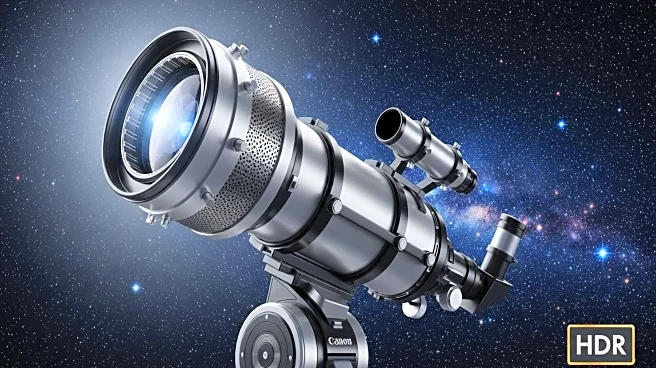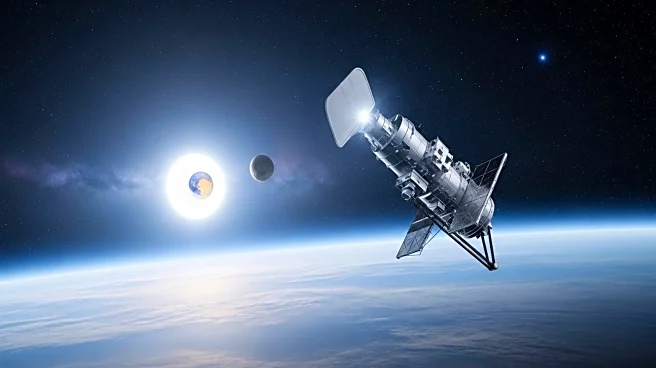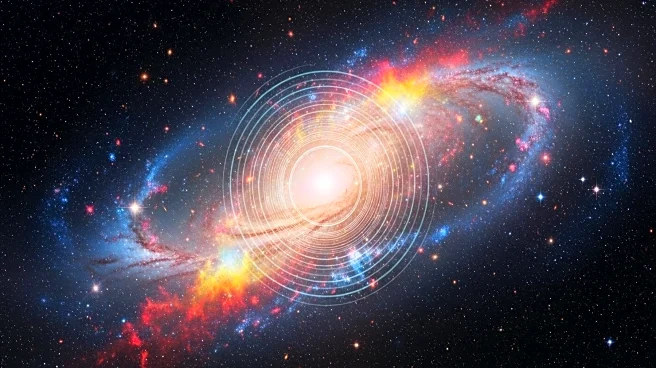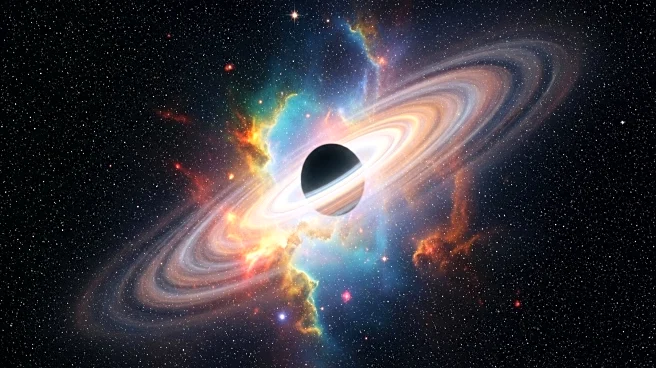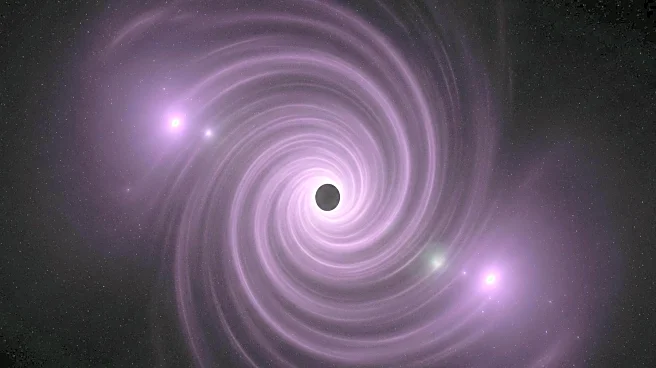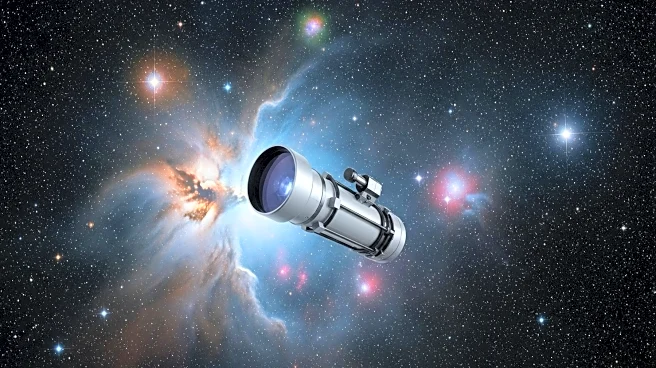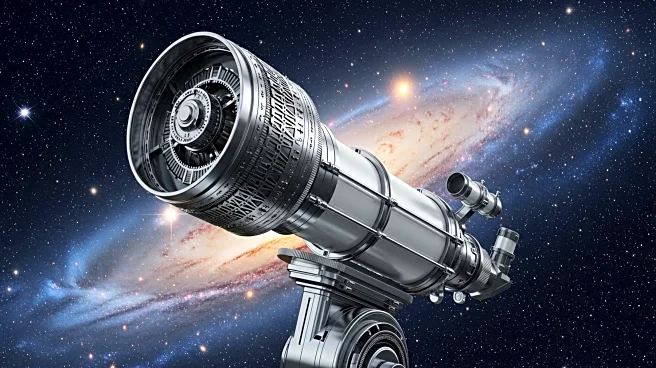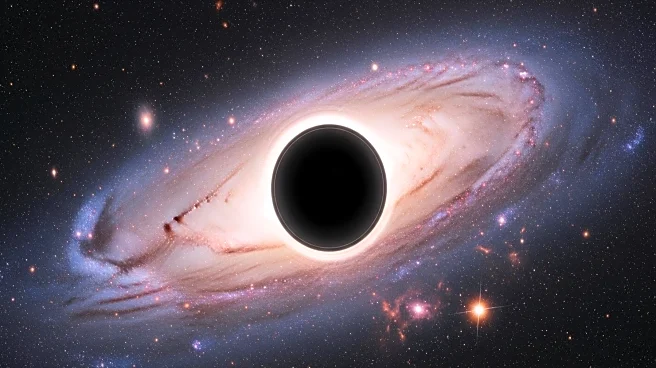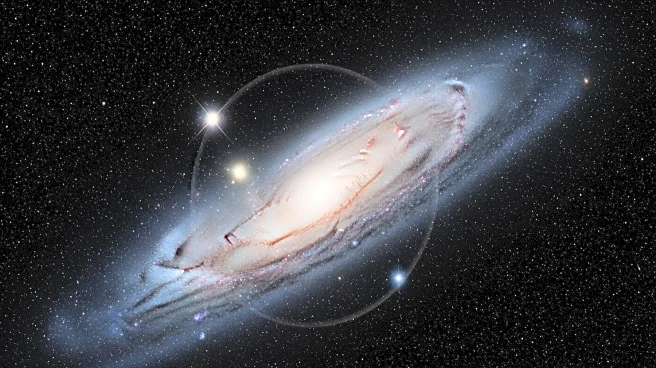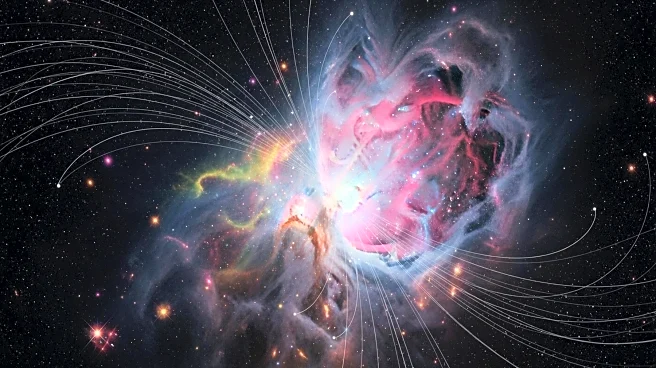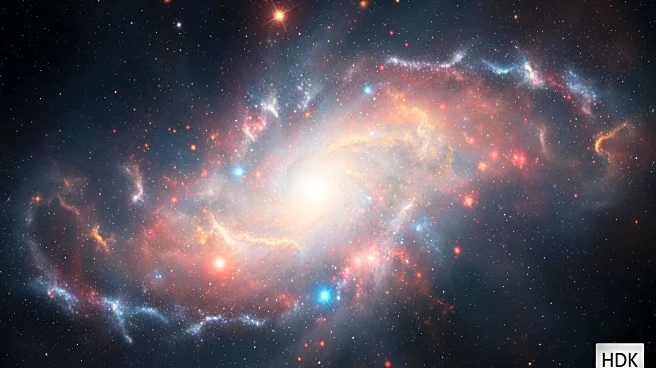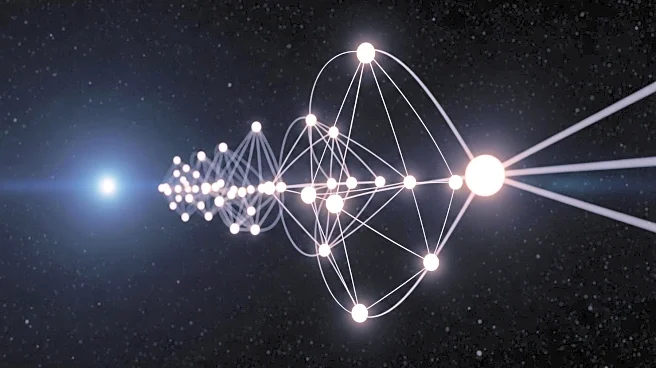What is the story about?
What's Happening?
Astronomers using the James Webb Space Telescope have identified a new cosmic object, potentially a 'black hole star,' which challenges existing theories about early universe phenomena. The object, named 'the Cliff,' exhibits a sharp increase in brightness known as the Balmer break, which cannot be explained by massive galaxies or typical active galactic nuclei. This discovery suggests that the object is a black hole surrounded by a dense cocoon of gas, causing it to glow like a star. The findings are part of ongoing research into mysterious 'little red dots' first observed by the telescope in 2022, which were initially thought to be massive galaxies or actively feeding supermassive black holes.
Why It's Important?
The identification of a 'black hole star' could significantly alter our understanding of cosmic evolution and the formation of supermassive black holes. If these objects are indeed black hole stars, they may provide insights into how supermassive black holes emerged early in the universe. This discovery challenges current models of galaxy and black hole formation, pushing the boundaries of astrophysical theories. The research could lead to a reevaluation of the processes involved in early universe development, potentially impacting future astronomical studies and technologies.
What's Next?
Further observations and studies are planned to confirm the nature of 'black hole stars' and their role in cosmic evolution. Researchers aim to use the James Webb Space Telescope to study brighter 'little red dots' to understand the structure and behavior of these objects. Continued monitoring and data collection will help distinguish between different scenarios and refine theoretical models. The findings may lead to new hypotheses about the growth and evolution of black holes and galaxies in the early universe.
Beyond the Headlines
The discovery of 'black hole stars' raises questions about the limits of current astrophysical models and the potential for unknown cosmic phenomena. It highlights the importance of advanced telescopes like the James Webb in uncovering new aspects of the universe. The research underscores the need for interdisciplinary collaboration in astronomy to explore and understand complex cosmic events. Ethical considerations may arise regarding the allocation of resources for space exploration and the prioritization of scientific research.
AI Generated Content
Do you find this article useful?
